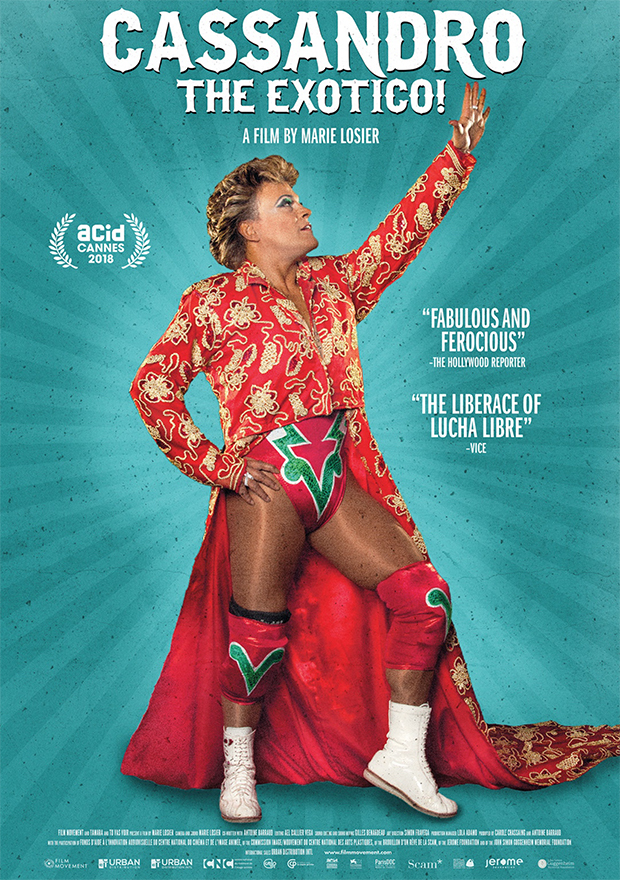Much like a luchador teetering on the ropes during a high-paced lucha libre (the Mexican style of pro-wrestling) match, Cassandro The Exotico! is an artful balancing act, one that extols the immortal legacy of Cassandro while showing his very mortal body dealing with the effects of a lifetime spent in the ring. The documentary, by filmmaker Marie Losier (The Ballad of Genesis and Lady Jay), follows Cassandro – an exótico, a Mexican wrestling character-type that often gets compared to drag queens with its similar accentuation of camp and felinity – through the latter stages of his trailblazing career.
“A lot of people see me as an exótico leader, as an exótico goddess, that’s why I’m called, ‘the Liberace of Lucha Libre,’ and ‘The Exótico Queen,’ and other stuff, but I’ve been through a lot,” Cassandro (born Saul Armendariz) says at the start of the film. From there, Cassandro the Exotico!, shot entirely on 16mm over a handful of years, offers an intimate glimpse at an aging artist who fought hard — and continues to fight for his dream. Through substance abuse, homophobia, and countless surgeries, Cassandro battles against all the odds with his enchanting grin and magnificent pompadour.
Expect not an ESPN 30 For 30-style documentary with a conclusive end. Though retirement is heavily implied in Cassandro, spoiler alert — he continues to compete, with a recent appearance at Chicago’s RiSE promotion in June 2019. Instead, through deliberate filmmaking decisions and breathtaking editorial scenes, Cassandro seemingly casts a spell, weakening reality to allow a glimpse into what elements went into creating such a being that is Cassandro. A gorgeous masked luchador walks alone in the desert, his pristine cloak billowing in the wind. A quartet of oiled muscle-men pulls a lover’s bed down a city’s street. Cassandro lies in repose at his funeral as near-naked men grieve by flexing and posing. Cassandro The Exotico! knows that in order to properly tell the story of Saul Armendariz, it must also speak of Cassandro as a mythical figure, one who stands shoulder-to-shoulder with such icons as Blue Demon, Mil Mascaras, and El Santo.
In fact, El Hijo del Santo makes a cameo in Cassandro, and the understated nature of this appearance highlights one potential issue with the film. Cassandro’s voice guides the documentary, which means that none of his peers, fans or contemporaries are given a chance to emphasize his significance. Cassandro faced El Hijo Del Santo for the UWA World Welterweight Championship in 1991. At the time, the idea of an exótico challenging the son of the most-famous luchador in Mexican wrestling history was unheard of. The negative backlash was so great that Cassandro attempted suicide a week before the scheduled bout. Cassandro recovered in time for the bout, and through the display of his wrestling skills in the match, earned the respect of the lucha libre community. Filmmaker Marie Losier chose to keep the lens focused tightly on Cassandro for the film, which, unfortunately, kept some of his historical accomplishments off-camera.

Ultimately, Cassandro The Exotico! is a phenomenal experience that succeeds in telling the story of this lucha libre legend. It’s one part celebration of a wrestling icon and one part intimate examination of the sacrifices – physical, mental, and emotional – that he endured in order to carve his place in history.